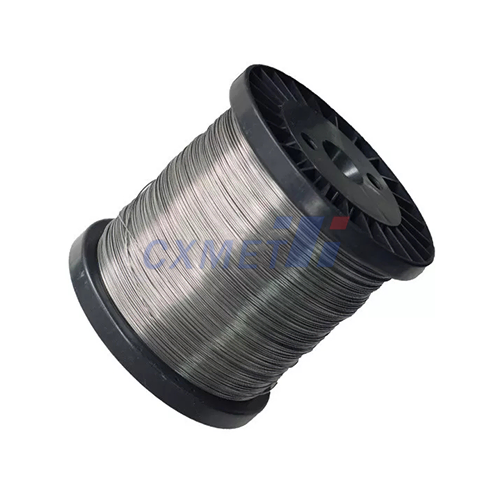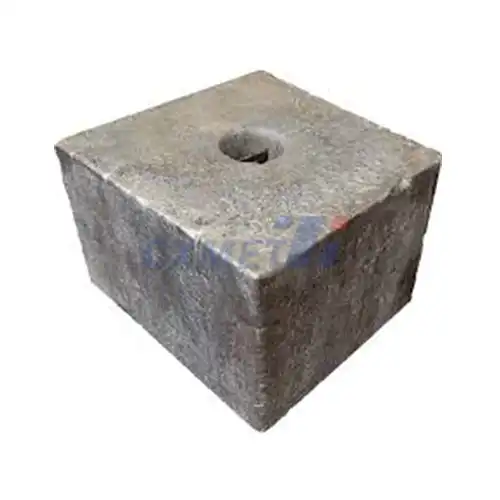- English
- French
- German
- Portuguese
- Spanish
- Russian
- Japanese
- Korean
- Arabic
- Greek
- German
- Turkish
- Italian
- Danish
- Romanian
- Indonesian
- Czech
- Afrikaans
- Swedish
- Polish
- Basque
- Catalan
- Esperanto
- Hindi
- Lao
- Albanian
- Amharic
- Armenian
- Azerbaijani
- Belarusian
- Bengali
- Bosnian
- Bulgarian
- Cebuano
- Chichewa
- Corsican
- Croatian
- Dutch
- Estonian
- Filipino
- Finnish
- Frisian
- Galician
- Georgian
- Gujarati
- Haitian
- Hausa
- Hawaiian
- Hebrew
- Hmong
- Hungarian
- Icelandic
- Igbo
- Javanese
- Kannada
- Kazakh
- Khmer
- Kurdish
- Kyrgyz
- Latin
- Latvian
- Lithuanian
- Luxembou..
- Macedonian
- Malagasy
- Malay
- Malayalam
- Maltese
- Maori
- Marathi
- Mongolian
- Burmese
- Nepali
- Norwegian
- Pashto
- Persian
- Punjabi
- Serbian
- Sesotho
- Sinhala
- Slovak
- Slovenian
- Somali
- Samoan
- Scots Gaelic
- Shona
- Sindhi
- Sundanese
- Swahili
- Tajik
- Tamil
- Telugu
- Thai
- Ukrainian
- Urdu
- Uzbek
- Vietnamese
- Welsh
- Xhosa
- Yiddish
- Yoruba
- Zulu
What Purity Levels Are Available for Titanium Sputtering Targets?
Titanium sputtering targets are essential components in the thin film deposition process, widely used in various industries such as electronics, optics, and materials science. The purity level of these targets plays a crucial role in determining the quality and performance of the resulting thin films. In this blog post, we will explore the different purity levels available for titanium sputtering targets and their implications for various applications.
What is the difference between 2N, 3N, and 4N titanium sputtering targets?
Titanium sputtering targets are classified based on their purity levels, with the most common grades being 2N, 3N, and 4N. These designations refer to the number of nines in the purity percentage, indicating the amount of titanium present in the target material.
2N (99%) titanium sputtering targets:
2N titanium targets have a purity level of 99%, meaning they contain 99% titanium and 1% impurities. These targets are the most economical option and are suitable for applications where ultra-high purity is not critical. They are often used in decorative coatings, architectural glass, and some basic electronic applications.
3N (99.9%) titanium sputtering targets:
3N targets offer a higher purity level of 99.9%, with only 0.1% impurities. This grade strikes a balance between cost and performance, making it popular for many industrial applications. 3N titanium targets are commonly used in semiconductor manufacturing, optical coatings, and solar cell production.
4N (99.99%) titanium sputtering targets:
4N titanium targets boast an impressive purity level of 99.99%, with merely 0.01% impurities. These high-purity targets are ideal for applications requiring exceptional film quality and performance. They are extensively used in advanced electronics, aerospace components, and cutting-edge research in materials science.
The choice between 2N, 3N, and 4N titanium sputtering targets depends on the specific requirements of the application. Factors to consider include the desired film properties, the sensitivity of the substrate, and the overall project budget. Higher purity targets generally produce films with better adhesion, uniformity, and electrical properties, but they come at a higher cost.
How does the purity of titanium sputtering targets affect thin film quality?
The purity of titanium sputtering targets has a significant impact on the quality of the resulting thin films. Understanding this relationship is crucial for achieving optimal performance in various applications.
Film composition and stoichiometry:
Higher purity targets lead to more precise control over the film composition. With fewer impurities, the deposited films closely match the desired stoichiometry, ensuring that the intended material properties are achieved. This is particularly important in applications such as semiconductors and optical coatings, where even small variations in composition can significantly affect performance.
Impurity incorporation:
Lower purity targets may introduce unwanted impurities into the thin film. These impurities can act as defects or dopants, altering the film's electrical, optical, or mechanical properties. In sensitive applications like microelectronics or photovoltaics, such impurities can lead to device failure or reduced efficiency.
Film uniformity and surface roughness:
Higher purity targets generally produce films with improved uniformity and lower surface roughness. This is because impurities in the target material can lead to non-uniform sputtering rates and localized variations in deposition. Smoother, more uniform films are essential for applications requiring precise optical or electrical properties.
Adhesion and stress:
The purity of the target material can influence the adhesion of the deposited film to the substrate. Higher purity films often exhibit better adhesion due to fewer contaminants at the interface. Additionally, the stress in the deposited film can be affected by impurities, potentially leading to delamination or other structural issues in lower purity films.
Long-term stability:
Thin films deposited from higher purity targets tend to have better long-term stability. Impurities can act as nucleation sites for oxidation, corrosion, or other degradation processes. By minimizing these impurities, high-purity targets contribute to the production of more durable and reliable thin films.
What are the applications of high-purity titanium sputtering targets?
High-purity titanium sputtering targets find applications in a wide range of industries due to their excellent properties and the superior quality of the thin films they produce. Let's explore some of the key applications of these targets:
Semiconductor industry:
In the semiconductor industry, high-purity titanium targets are used to deposit thin films for various purposes. Titanium nitride (TiN) films, produced by reactive sputtering of titanium in a nitrogen atmosphere, serve as diffusion barriers and adhesion layers in integrated circuits. These films prevent the interdiffusion of metal layers and improve the adhesion between different materials in the device structure. Additionally, titanium silicide (TiSi2) films are used as low-resistance contacts in microelectronic devices.
Optical coatings:
High-purity titanium targets are essential in the production of optical coatings for lenses, mirrors, and other optical components. Titanium dioxide (TiO2) films, deposited by reactive sputtering, are widely used as anti-reflective coatings due to their high refractive index and excellent optical properties. These coatings improve the performance of optical devices by reducing glare and increasing light transmission.
Solar cells:
In the photovoltaic industry, titanium-based thin films play a crucial role in enhancing the efficiency of solar cells. Titanium dioxide layers are used as anti-reflective coatings and electron transport layers in various types of solar cells, including perovskite and dye-sensitized solar cells. The high purity of the titanium target ensures minimal contamination, which is critical for maintaining the performance and longevity of these sensitive devices.
Aerospace and automotive industries:
High-purity titanium targets are used to deposit protective coatings on aerospace and automotive components. These coatings provide excellent wear resistance, corrosion protection, and thermal barriers. For example, titanium nitride coatings are applied to turbine blades and other engine components to improve their durability and performance under extreme conditions.
Biomedical implants:
In the medical field, titanium and titanium alloy coatings are widely used for biomedical implants. High-purity titanium targets are essential for producing biocompatible coatings that promote osseointegration (the structural and functional connection between living bone and the surface of an implant). These coatings enhance the longevity and success rate of dental implants, joint replacements, and other medical devices.
Data storage devices:
The data storage industry relies on high-purity titanium targets for the production of thin film magnetic recording media. Titanium-based underlayers are used to control the grain structure and magnetic properties of the recording layer, improving the storage density and performance of hard disk drives.
Decorative coatings:
While not requiring the highest purity levels, titanium targets are also used in the production of decorative coatings. Titanium nitride coatings, known for their golden appearance and excellent hardness, are applied to jewelry, watches, and architectural elements for both aesthetic and protective purposes.
Cutting tools:
High-purity titanium targets are used to deposit wear-resistant coatings on cutting tools and machine parts. Titanium nitride and titanium aluminum nitride (TiAlN) coatings significantly improve the hardness, wear resistance, and thermal stability of cutting tools, extending their lifespan and enabling higher cutting speeds.
Conclusion
The availability of various purity levels for titanium sputtering targets allows researchers and manufacturers to choose the most appropriate grade for their specific applications. From 2N to 4N purity, each grade offers a balance between cost and performance. The impact of target purity on thin film quality is significant, affecting properties such as composition, uniformity, and long-term stability. High-purity titanium targets find applications across numerous industries, from cutting-edge semiconductor manufacturing to biomedical implants and renewable energy technologies. As technology continues to advance, the demand for high-purity titanium sputtering targets is likely to grow, driving further innovations in thin film deposition processes and materials science.
At SHAANXI CXMET TECHNOLOGY CO., LTD, we take pride in our extensive product range, which caters to diverse customer needs. Our company is equipped with outstanding production and processing capabilities, ensuring the high quality and precision of our products. We are committed to innovation and continuously strive to develop new products, keeping us at the forefront of our industry. With leading technological development capabilities, we are able to adapt and evolve in a rapidly changing market. Furthermore, we offer customized solutions to meet the specific requirements of our clients. If you are interested in our products or wish to learn more about the intricate details of our offerings, please do not hesitate to contact us at sales@cxmet.com. Our team is always ready to assist you.
References:
1. Materials Science and Engineering: An Introduction, 10th Edition by William D. Callister Jr. and David G. Rethwisch
2. Handbook of Thin Film Deposition, 4th Edition by Krishna Seshan and Dominic Schreiber
3. Thin Film Materials: Stress, Defect Formation and Surface Evolution by L. B. Freund and S. Suresh
4. Sputtering Materials for VLSI and Thin Film Devices by Jaydeep Sarkar
5. Thin Film Deposition: Principles and Practice by Donald L. Smith
6. Advanced Characterization Techniques for Thin Film Solar Cells, 2nd Edition by Daniel Abou-Ras, Thomas Kirchartz, and Uwe Rau
7. Handbook of Deposition Technologies for Films and Coatings, 3rd Edition by Peter M. Martin
8. Titanium in Medical and Dental Applications by Francis H. Froes and Ma Qian
9. Thin Film Solar Cells: Fabrication, Characterization and Applications by Jef Poortmans and Vladimir Arkhipov
10. Materials Science of Thin Films, 2nd Edition by Milton Ohring





